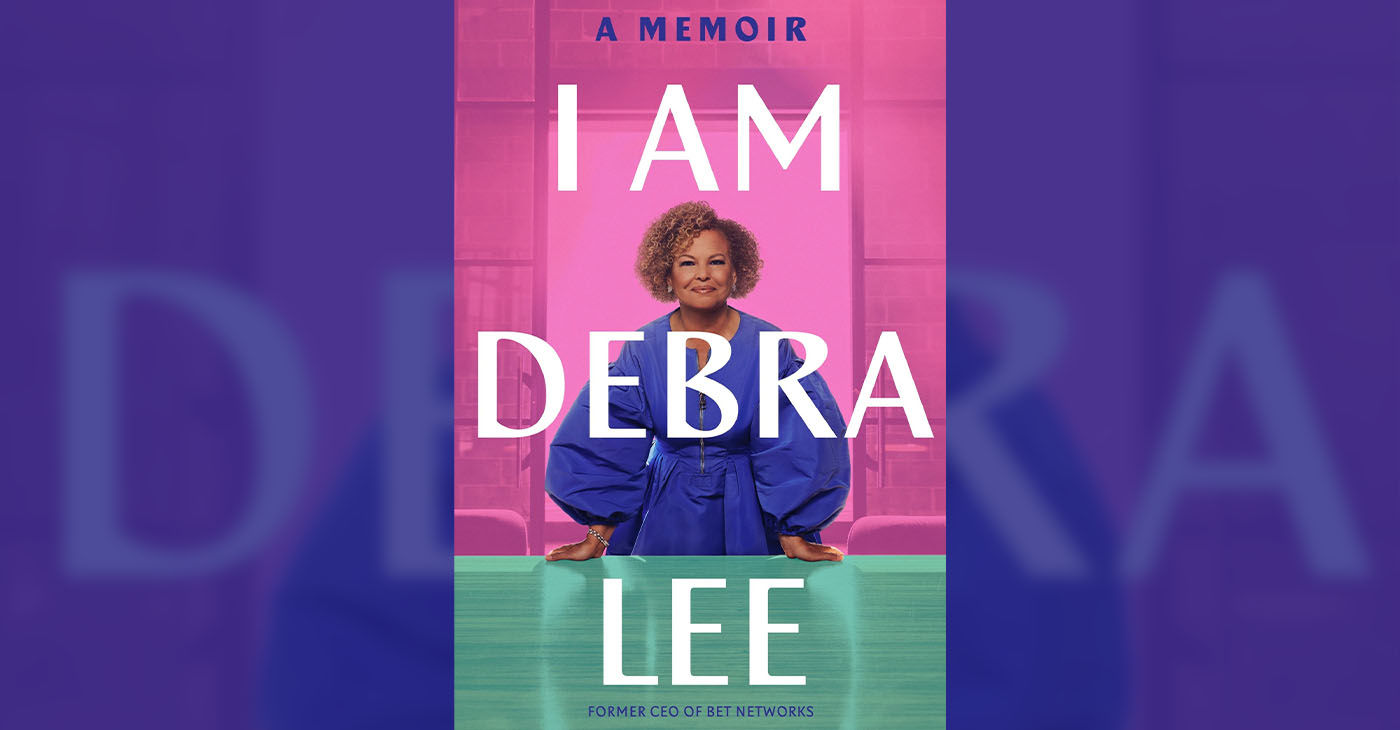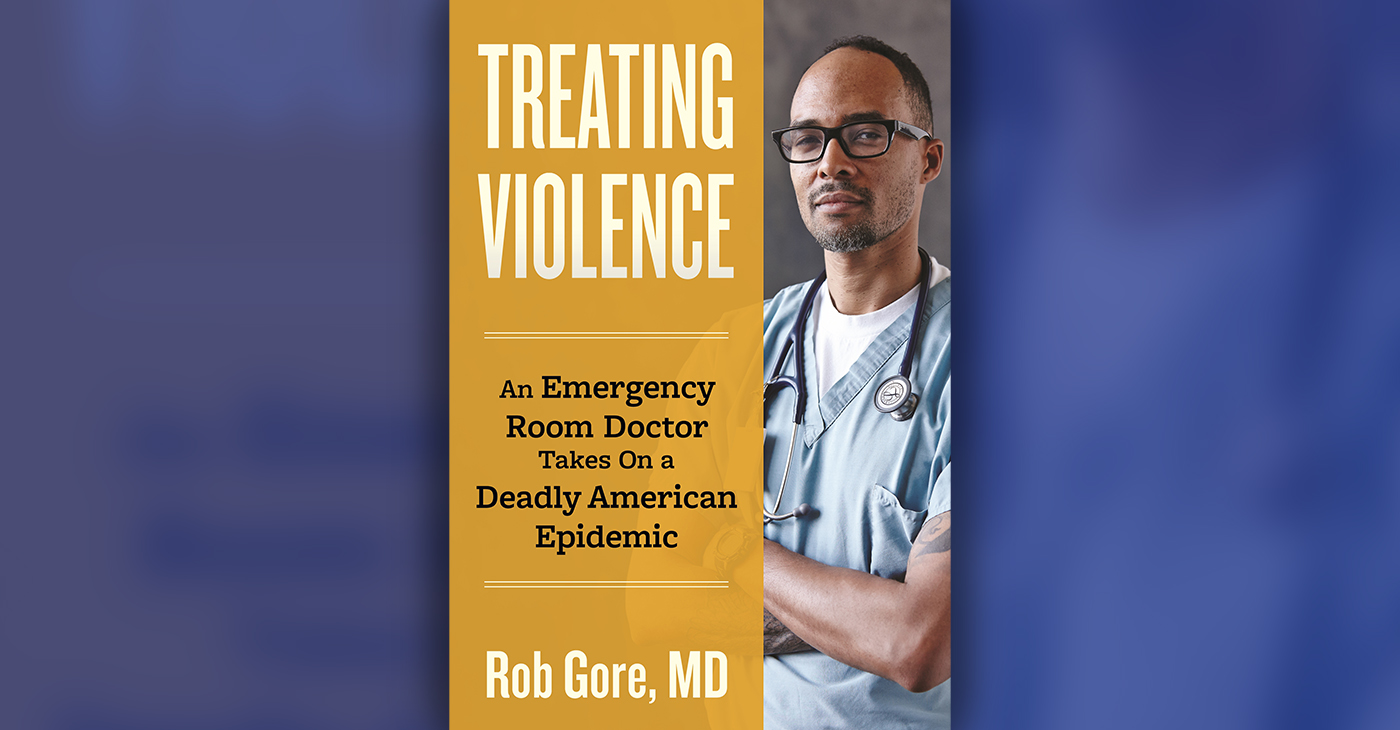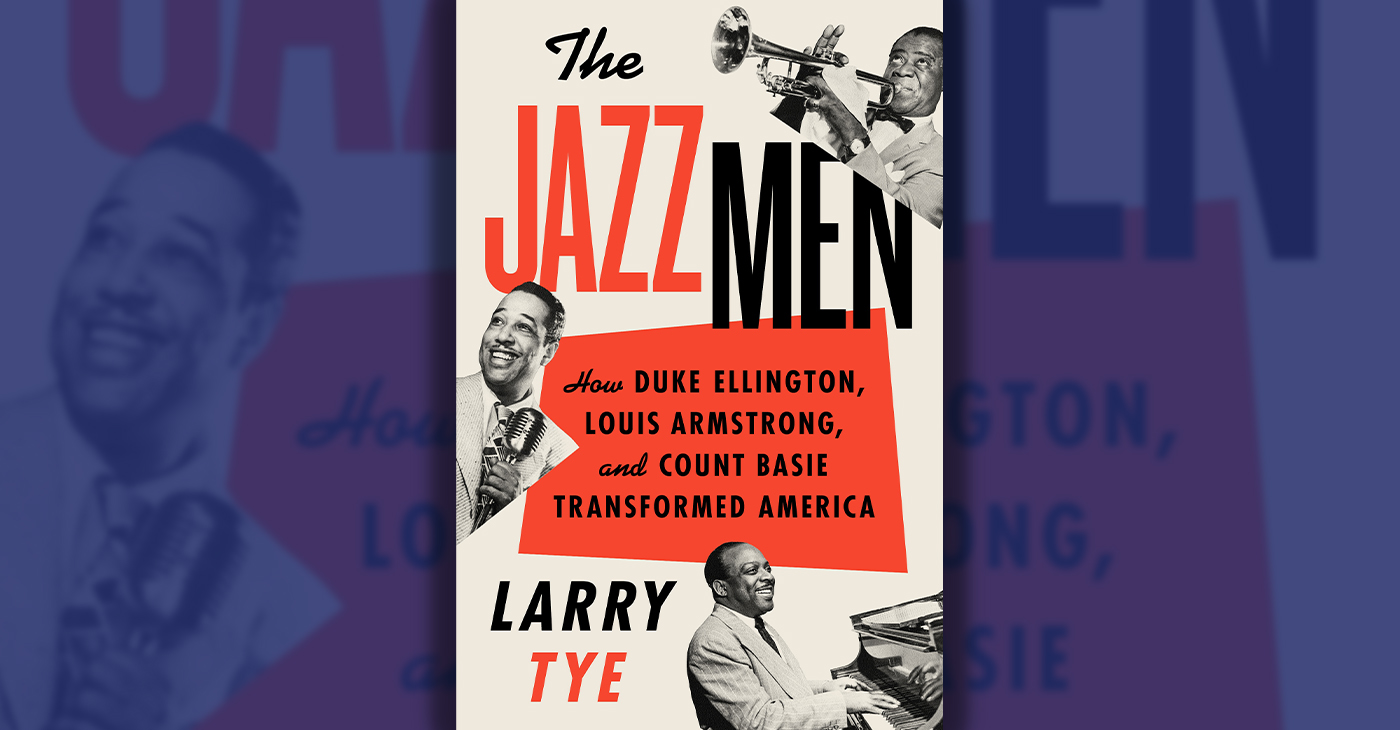Book Reviews
“I Am Debra Lee: A Memoir” by Debra Lee
Everybody’s looking at you. They’re wondering what you’re going to do next, because you often surprise them. They don’t know what you’re about to say because you’re never predictable. So stand up, throw your shoulders back, let them watch and learn a thing or two. As in the new memoir, “I Am Debra Lee” by Debra Lee, represent.

c.2023, Legacy Lit Books, $29.00, 256 pages
By Terry Schlichenmeyer
Everybody’s looking at you.
They’re wondering what you’re going to do next, because you often surprise them. They don’t know what you’re about to say because you’re never predictable. So stand up, throw your shoulders back, let them watch and learn a thing or two. As in the new memoir, “I Am Debra Lee” by Debra Lee, represent.
Back when she was still in grade school, little Debra Lee’s father decided that she would be a lawyer someday — and so she was. Though she often pushed the envelope and was her own person, it was hard to even think of disappointing the Major, a man who always admonished Lee to be a “nice girl.”
Back then, Lee “lived and breathed Black culture,” a feeling she carried through law school and into her first big job at a law firm that “treated its associates well,” and where she instinctively found a mentor who helped her in her niche. He passed along to her a few choice clients, which eventually led Lee to a life-changing introduction to Bob Johnson, who was then the CEO of Black Entertainment Television, or BET.
It was a soul-searching time for Lee. Personally, she’d had a pregnancy she didn’t want, and an abortion, then a marriage that failed. Professionally, the law firm she worked for was no longer a good fit. Johnson offered her a job and a title, but it involved a considerable salary cut, which was tough to take. Still, Lee looked at the long picture and leapt at the opportunity.
The job had its downsides, specifically, eternally long hours and an overwhelming workload with no work-life balance whatsoever, but Lee was undaunted. She learned about the industry and herself, found her limits and sailed past them, and enjoyed the chance to befriend people whose names pepper the tabloids.
She never seriously considered reaching for the stars until she was named COO, with a public face to maintain, a reputation to uphold, and a list of things she’d never do.
And then she did one of them…
For readers who are unfamiliar with the whole story, let’s just say that you’ll want to be prepared. “I Am Debra Lee” contains a big ka-boom.
Leading up to that, though, is a treat: the inner mechanics of a media empire are told side-by-side here with the story of a long, exhausting journey and the personal sacrifices it demanded. It isn’t presented as a burden, however; instead, author Debra Lee holds her tale with a steely grip and no apologies, making sure that she’s clear on the extra work it took being a Black woman in a mostly-man’s world. There’s not a single ounce of poor-me in that but rather, a series of subtle lessons to accompany the outright advice that Lee scatters about.
And then there’s that ka-boom. Read about it from this first-person point of view, and you won’t be sorry. If you’re ready for an absorbing, fascinating memoir that pulls no punches, “I Am Debra Lee” is absolutely worth a look.
Book Reviews
Book Review: Treating Violence: An Emergency Room Doctor Takes on a Deadly American Epidemic
Well, thank you so much to your co-worker. That’s where you got this ick, this scratchy-throat, achy-body, upset-stomach, can’t-sleep virus. He sneezed and that’s all it took. Now you’ve got what he had and you’re trying not to spread it anymore. As you know from experience, and as attested in the new book “Treating Violence” by Rob Gore, MD, epidemics affect everybody. In this book, the scourge is violence.

By Terri Schlichenmeyer
The Bookwurm Sez
Well, thank you so much to your co-worker.
That’s where you got this ick, this scratchy-throat, achy-body, upset-stomach, can’t-sleep virus. He sneezed and that’s all it took. Now you’ve got what he had and you’re trying not to spread it anymore.
As you know from experience, and as attested in the new book “Treating Violence” by Rob Gore, MD, epidemics affect everybody. In this book, the scourge is violence.
Once upon a time, Gore had a brother. Angel wasn’t biologically related to Gore, but within a short time after Gore’s parents fostered the young boy, they considered each other siblings.
They tussled and played together. Gore watched over his “brother” and when Angel got older, he did the same for Gore. But Angel was anything but an angel and, slowly, he turned to hustling drugs.
Gore says he wishes he’d done more to stop him. Eventually, Angel went to prison.
Growing up in Brooklyn, Gore knew that the streets were not kind to people who looked like him, people with Brown or Black skin, and he understood early how privileged he was.
He was granted – and sometimes squandered – the best education. In high school, after he was given a chance to “shadow” sports medicine practitioners and after he noticed a lack of Black people in medical careers, he saw his own future. Gore attended Morehouse College, with an eye toward helping Black and Brown people in crisis.
According to the Centers of Disease Control and Prevention (CDC), Gore says, “homicide… is the number-two cause of death for Black males ages one to nine…” but there are ways to identify issues before they become dangerous, out-of-control problems.
The process moves through examination of a person’s childhood traumas and what happened to them as adults, followed by listening, validating, and asking for calm.
Gore understood this as a young doctor, and he decided to do something about it.
“Lack of funding was a roadblock” for it, he says, “but the seed was planted, and my conviction continued to grow.”
You’re tired of attending funerals, and tired of reading about another dead child somewhere. You’re ready to act. You’re ready to read “Treating Violence.”
Indeed, this book might light a fire under you.
Gore first explains what street violence does to Black communities and families, which is shocking and upsetting.
This begins his biography, which is a brief (too-brief!) set-up for how and why Gore ultimately founded Kings Against Violence Initiative (KAVI), an organization that uses trained volunteers to lower the anger level and any desires for revenge when someone is the victim of violence.
The story is a rousing one, but readers may feel a bit cheated by the rushed transition from Gore’s life and his work as an ER doctor, to KAVI. Information on KAVI and similar organizations may spur you to take action.
With the Surgeon General’s recent warning on gun use in mind, “Treating Violence” couldn’t be more timely or necessary. Find it, read it for the excellent biography and the ideas, statistics, and urgency – and get to work.
Black History
Book Review: ‘The Jazzmen: How Duke Ellington, Louis Armstrong, and Count Basie Transformed America’
Your toes didn’t wait long before they started tapping. They knew what was coming, almost as soon as the band was seated. They knew before the first notes were played and the hep cats and jazz babies hit the floor to cut a rug. Daddy, it was the bee’s knees but in the new book “The Jazzmen” by Larry Tye, if you were the Sheik on the stage, makin’ cabbage wasn’t all that swank.

By Terri Schlichenmeyer
Your toes didn’t wait long before they started tapping.
They knew what was coming, almost as soon as the band was seated. They knew before the first notes were played and the hep cats and jazz babies hit the floor to cut a rug. Daddy, it was the bee’s knees but in the new book “The Jazzmen” by Larry Tye, if you were the Sheik on the stage, makin’ cabbage wasn’t all that swank.
Louis Armstrong was born in 1900 or thereabouts in a “four-room frame house on an unpaved lane” in a section of New Orleans called “Back o’Town … the Blackest, swampiest, and most impoverished” area of the city. His mother was a “chippie,” and the boy grew up running barefoot and wild, the latter of which led to trouble. At age twelve, Armstrong was sent to the Colored Waif’s Home for recalcitrant Black boys, and that changed his life. At the “home,” he found mentors, father-figures and love, and he discovered music.
For years, Bill “Count” Basie insisted that he’d grown up with “no-drama, no-mystery, and nobody’s business but his,” but the truth was “sanitized.” He hated school and dropped out in junior high, hoping to join the circus. Instead, he landed a job working in a “moving-picture theater” as a general worker. When the theater’s piano player didn’t come to work one day, Basie volunteered to sit in. He ultimately realized that “I had to get out … of Red Bank [New Jersey], and music was my ticket.”
Even as a young teenager, Edward Ellington insisted that he be treated like a superstar. By then, his friends had nicknamed him “Duke,” for his insistence on dressing elegantly and acting like he was royalty. And he surely was — to his mother, and to millions of swooning female fans later in his life.
Three men, born at roughly the same time, had more in common than their ages. Two of them had mothers “who doted” on them. All three were perform-aholics. And, for all three, “Race … fell away as America listened.”
Feel up to a time-trip back a century or more? You won’t even have to leave your seat, just grab “The Jazzmen” and hang on.
In his introduction, author Larry Tye explains why he so badly wanted to tell the story of these three giants of music and how Basie’s, Ellington’s, and Armstrong’s lives intersected and diverged as all three were near-simultaneously performing for audiences world-wide. Their stories fascinated him, and his excitement runs strong in this book. Among other allures, readers used to today’s star-powered gossip will enjoy learning about an almost-forgotten time when performers took the country by storm by bootstrapping without a retinue of dozens.
And the racism the three performers encountered disappeared like magic sometimes, and that’s a good tale all by itself.
This is a musician’s dream book, but it’s also a must-read story if you’ve never heard of Basie, Ellington, or Armstrong. “The Jazzmen” may send you searching your music library, so make note.
Book Reviews
Book Review: Books for Poetry Month by Various Authors
Picture books for the littles are a great way to introduce your 3-to7-year-old to poetry because simple stories lend themselves to gentle rhymes and lessons. “See You on the Other Side” by Rachel Montez Minor, illustrated by Mariyah Rahman (Crown, $18.99) is a rhyming book about love and loss, but it’s not as sad as you might think.
c.2023, 2024, Various Publishers
$18.99 – $20.00
By Terri Schlichenmeyer
On your hands, you have lots of time.
You can make a song, or you can make a rhyme. Make a long story, make a short one, write what you like, make it simple and fun. Writing poetry uses your imagination: you play with words, paint a picture. There’s no intimidation. Creating poetry can be a breeze, or just reach for and read books exactly like these…
Picture books for the littles are a great way to introduce your 3-to7-year-old to poetry because simple stories lend themselves to gentle rhymes and lessons. “See You on the Other Side” by Rachel Montez Minor, illustrated by Mariyah Rahman (Crown, $18.99) is a rhyming book about love and loss, but it’s not as sad as you might think.
In this book, several young children learn that losing someone beloved is not a forever thing, that it is very sad but it’s not scary because their loved one is always just a thought away. Young readers who’ve recently experienced the death of a parent, grandparent, sibling, or friend will be comforted by the rhyme here, but don’t dismiss the words. Adults who’ve recently lost a loved one will find helpful, comforting words here, too.
Flitting from here to there and back again, author Alice Notley moves through phases of her life, locations, and her diagnosis and treatment of breast cancer in her latest poetry collection, “Being Reflected Upon” (Penguin, $20.00). From 2000 to 2017, Notley lived in Paris where she wrestled with breast cancer. That, and her life abroad, are reflected in the poetry here; she also takes readers on a poetic journey on other adventures and to other places she lived and visited. This book has a random feel that entices readers to skip around and dive in anywhere. Fans of Notley will appreciate her new-age approach to her works; new fans will enjoy digging into her thoughts and visions through poems. Bonus: at least one of the poems may make you laugh.
If you’re a reader who’s willing to look into the future, “Colorfast” by Rose McLarney (Penguin, $20.00) will be a book you’ll return to time and again. This, the author’s fourth collection, is filled with vivid poems of graying and fading, but also of bright shades, small things, women’s lives yesterday and today, McLarney’s Southern childhood, and the things she recalls about her childhood. The poems inside this book are like sitting on a front porch in a wooden rocking chair: they’re comfortable, inviting, and they tell a story that readers will love discovering.
If these books aren’t enough, or if you’re looking for something different, silly, or classic, then head to your favorite bookstore or library. The ladies and gentlemen there will help you figure out exactly what you need, and they can introduce you to the kind of poetry that makes you laugh, makes you cry, entices a child, inspires you, gives you comfort, or makes you want to write your own poems. Isn’t it time to enjoy a rhyme?
-

 Arts and Culture3 weeks ago
Arts and Culture3 weeks agoRooted in Tradition: The Intricate History of Black Hair Braiding
-

 Bay Area4 weeks ago
Bay Area4 weeks ago“I Will Not Be Bullied,” Says Oakland Mayor Sheng Thao
-

 Bay Area2 weeks ago
Bay Area2 weeks agoPG&E Increases Rates While Bay Area Households Are Struggling to Stay Afloat
-

 Business3 weeks ago
Business3 weeks agoGov Newsom: Raising Fast Food Minimum Wage to $20 Pays Off as Jobs Multiply in Industry
-

 Activism4 weeks ago
Activism4 weeks agoOpponents of Mayor Sheng Thao Are Calling on Her to Resign Following FBI Raid
-

 Community1 week ago
Community1 week agoHundreds Come to Jehovah’s Witnesses’ Assembly Hall for Three-Day Program of ‘Good News’ in Fremont
-

 Bay Area2 weeks ago
Bay Area2 weeks agoJuneteenth Mass Shooting Suspect Charge with Multiple Counts of Felony Assault by Alameda County DA Pamela Price
-

 Activism4 weeks ago
Activism4 weeks agoOakland Coliseum Sale to AASEG: A Model for Community Development and Inclusion























































